- 1Departamento de Fsica, Facultad de Ciencias Exactas y Naturales, Universidad de Buenos Aires, Ciudad Universitaria, Buenos Aires, Argentina
- 2CONICET-Universidad de Buenos Aires, Instituto de Fsica de Buenos Aires (IFIBA), Ciudad Universitaria, Buenos Aires, Argentina
- 3Centre for Quantum Technologies, National University of Singapore, Singapore, Singapore
We report a scheme for generation of high-order quadrature vortex states using two-mode photon-number squeezed states, generated via the non-linear process of Spontaneous Parametric Down Conversion. By applying a parametric rotation in the quadratures
1 Introduction
In quantum optics, a beam of light is in a squeezed state if its electric field amplitude has a reduced uncertainty, in relation to that of a coherent state. Thus, the term squeezing refers to squeezed uncertainty. In general, for a classical coherent state with N particles, the sensitivity of a measurement is limited by shot noise to the Standard Quantum Limit (SQL
An optical vortex is a singularity or zero point intensity of an optical field. More specific, a generic Laguerre-Gauss beam of order m of the form
In this article, we report a scheme for generation of high-order quadrature vortex states using two-mode photon-number squeezed states generated via the non-linear process of Spontaneous Parametric Down Conversion (SPDC). By applying a parametric rotation in the quadratures
A ϕ converter, also called mode converter, is customarily used in classical optics to convert two orthogonal Hermite-Gauss modes into a Laguerre-Gauss mode. The main motivation of the present work is to explore if an equivalent operation exists that can transform a Hermite-Gauss quadrature representation into a Laguerre-Gauss representation. We found such operation indeed exists. A remarkable feature of this operation is that it can be experimentally realized by using a balanced 50:50 beam splitter. A key application of the scheme reported here is in generation of photon-number squeezed states from quadrature vortex states, by implementation of the inverse protocol.
The article is structured as follows: First, in Section 2 we review the properties of two-mode photon-number squeezed states such as their quadrature representation and photon-number distribution, second in Section 3 we introduce the concept of quadrature rotation. Next, in Section 4, we present the quadrature representation of the rotated states in terms of Laguerre-Gauss modes. In Section 5, we present numerical simulations confirming the creation of N vortices for a squeezed input state containing
2 2-Mode Photon-Number Squeezed State
Consider a truncated two-mode photon-number squeezed state, produced by SPDC, in the Fock state representation of the form [21]:
where
To obtain a quadrature representation of the wavefunction for the state in Eq. 1, we use the standard representation of Fock states (
The quadrature representation of the input state
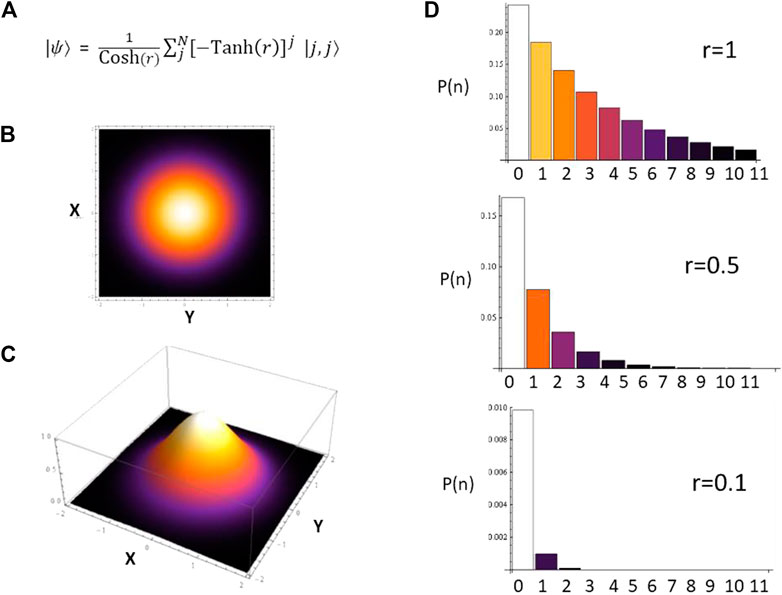
FIGURE 1. (A) Two-mode photon-number squeezed input state
3 Quadrature Rotation
The photon-number squeezed state depicted in Figure 1 displays a standard Gaussian profile in the quadratures
where
The input state transformed under the unitary operator
which represents a rotation of the quadrature by an angle ϕ. In the Heisenberg picture, considering standard commutation rules for creation and annhiliation operators, we obtain the following expression (see Appendix A):
By a binomial expansion in Eq. 5 we obtain:
where D is the normalization factor. The coefficients in the sums are of the form
In order to observe the action of the rotation
4 Laguerre-Gauss Mode Expansion
The quadrature representation of the rotated state
where
It is well known that Hermite-Gauss (HG) modes with spatial dependence
By choosing the rotation parameter
5 Numerical Results
To explore the resulting mode-profile in the quadrature
where r is the squeezing parameter and the coefficients take the form
We performed numerical simulations in the quadrature for different values of squeezing parameter r, and different values of photon-number N. The results are depicted in Figure 2 and Figure 3. The main result we observe is that, for a sufficiently small squeezing parameter r, the resulting quadrature profile exhibits
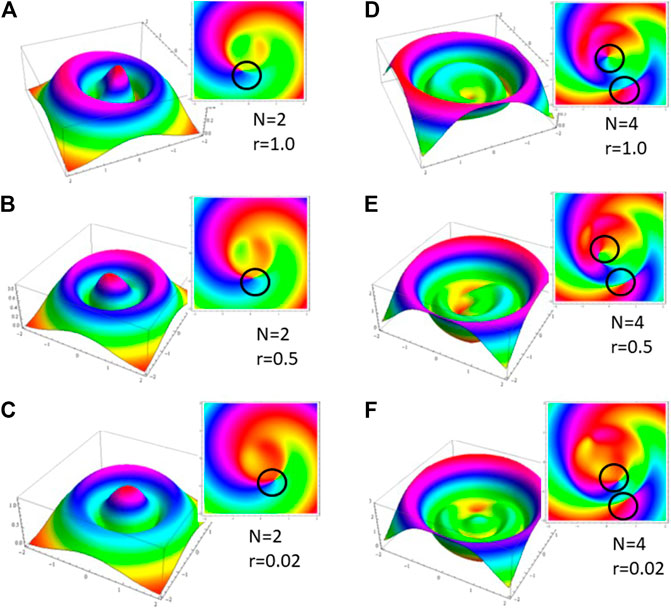
FIGURE 2. 3D plots of amplitude
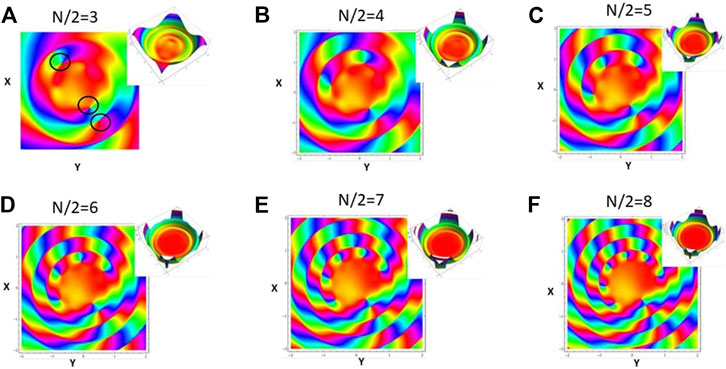
FIGURE 3. Phase profile
5.1 Dependence on Squeezing Parameter r
In order to better understand the impact of the squeezing parameter r in the formation of vortices in the quadrature, we performed numerical simulations for different squeezing parameters, and for different total number of photons N. This is displayed in Figures 2A–F. Figure 2 left column corresponds to
5.2 Dependence on Photon-Number N
To confirm the viability of generation of high-order vortex states in the quadratures we performed numerical simulations for larger total number of photons (
6 Photon-Number Distribution of Quadrature Vortex States
The generation of vortices in the quadrature can be considered an interference effect arising from photon-number fluctuations, therefore it is expected that the photon-number distribution should be modified for quadrature vortex states. To further confirm that photon-number fluctuations are mapped into interference effects in the quadratures, resulting in the emergence of vortices, for a two-mode photon-number squeezed input state, we calculated the photon-number distribution for the resulting vortex states
where
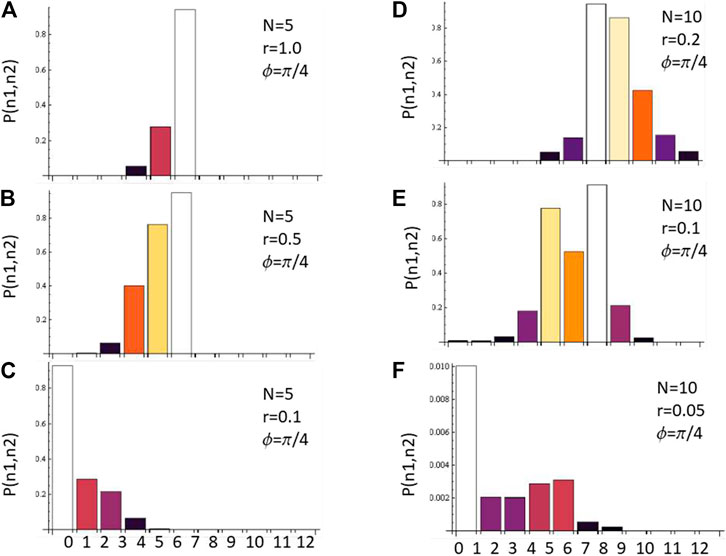
FIGURE 4. Photon-number statistics
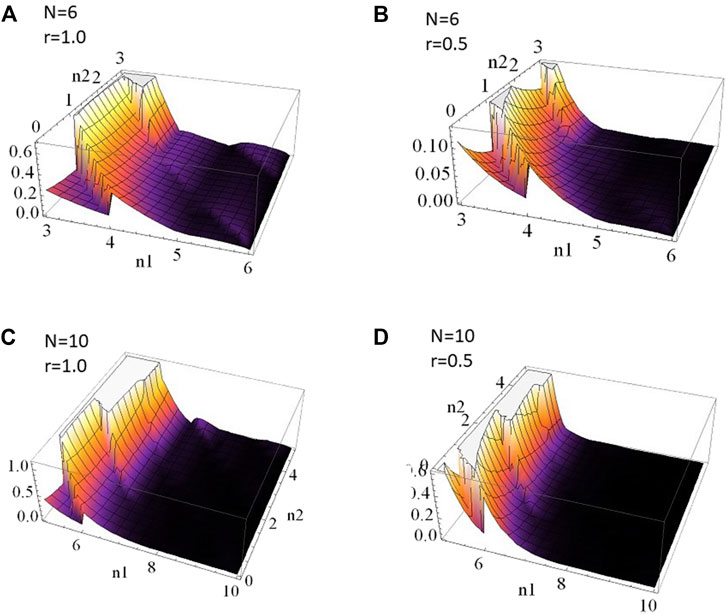
FIGURE 5. Numerical simulations of photon-number statistics
In order to further illustrate the photon-number imbalance between the two modes, introduced by the rotation in the quadratures, we performed numerical simulations for the two-mode photon number distribution
7 Discussion
We presented a scheme for generation of high-order quadrature vortex states starting from a two-mode photon-number squeezed state generated via the non-linear process of Spontaneous Parametric Down Conversion (SPDC). By applying a parametric rotation in the quadratures
Vortex states are customarily generated using various tools, such as Dove prisms, spiral plates, fork holograms, or astigmatic mode converters such as a cylindrical lenses. The important distinction is that these operations act on the transverse profile of the input beam. In the context of the present article, the rotation is performed on the quadrature representation of the state, which can be readily implemented in the lab by a balanced beam splitter. A key application of our scheme is in generation of two-mode photon-number squeezed states from two-mode quadrature vortex states, by implementing the inverse protocol.
Our scheme has the potential of exploiting the advantages of optical vortices, such as high dimensionality and topological properties, for quantum applications requiring squeezed uncertainty beyond the SQL limit (
Data Availability Statement
The data and numerical codes are available upon request.
Author Contributions
GP and AB conceived the idea and performed analytical derivations. GP and AB performed numerical simulations. GP wrote the manuscript. All authors provided critical feedback and helped shape the research, analysis and manuscript.
Funding
GP acknowledges financial support via grants PICT Startup 2015 0710 and UBACyT PDE 2017.
Conflict of Interest
The authors declare that the research was conducted in the absence of any commercial or financial relationships that could be construed as a potential conflict of interest.
References
1. Loudon R. The Quantum Theory of Light. 3rd ed. Oxford, United Kingdom: Oxford University Press (2000).
2. Xiao M, Wu L-A, Kimble HJ. Precision Measurement beyond the Shot-Noise Limit. Phys Rev Lett (1987) 59:278–81. doi:10.1103/physrevlett.59.278
3. Walther P, Pan J-W, Aspelmeyer M, Ursin R, Gasparoni S, Zeilinger A. De Broglie Wavelength of a Non-local Four-Photon State. Nature (2004) 429:158–61. doi:10.1038/nature02552
4. McKenzie K, Shaddock DA, McClelland DE, Buchler BC, Lam PK. Experimental Demonstration of a Squeezing-Enhanced Power-Recycled Michelson Interferometer for Gravitational Wave Detection. Phys Rev Lett (2002) 88:231102. doi:10.1103/physrevlett.88.231102
5. Goda K, Miyakawa O, Mikhailov EE, Saraf S, Adhikari R, McKenzie K, et al. A Quantum-Enhanced Prototype Gravitational-Wave Detector. Nat Phys (2008) 4:472–6. doi:10.1038/nphys920
6. Ourjoumtsev A, Tualle-Brouri R, Laurat J, Grangier P. Generating Optical Schrödinger Kittens for Quantum Information Processing. Science (2006) 312:83. doi:10.1126/science.1122858
7. Vahlbruch H, Chelkowski S, Hage B, Franzen A, Danzmann K, Schnabel R. Demonstration of a Squeezed-Light-Enhanced Power- and Signal-Recycled Michelson Interferometer. Phys Rev Lett (2005) 95:211102. doi:10.1103/physrevlett.95.211102
8. Wagner K, Janousek J, Delaubert V, Zou H, Harb C, Treps N, et al. Entangling the Spatial Properties of Laser Beams. Science (2008) 321:541–3. doi:10.1126/science.1159663
9. Jain N, Huisman SR, Bimbard E, Lvovsky AI. A Bridge between the Single-Photon and Squeezed-Vacuum States. Opt Express (2010) 18:18254–9. doi:10.1364/oe.18.018254
10. Neergaard-Nielsen S, Melholt Nielsen B, Hettich C, Molmer K, Polzik ES. Phys Rev Lett (2006) 97:083604. doi:10.1103/physrevlett.97.083604
11. Allen L, Beijersbergen MW, Spreeuw RJC, Woerdman JP. Orbital Angular Momentum of Light and the Transformation of Laguerre-Gaussian Laser Modes. Phys Rev A (1992) 45:8185–9. doi:10.1103/physreva.45.8185
12. Krenn M, Handsteiner J, Fink M, Fickler R, Ursin R, Malik M, et al. Twisted Light Transmission over 143 Km. Proc Natl Acad Sci USA (2016) 113:13648–53. doi:10.1073/pnas.1612023113
13. Paterson L, MacDonald MP, Arlt J, Sibbett W, Bryant PE, Dholakia K. Controlled Rotation of Optically Trapped Microscopic Particles. Science (2001) 292:912. doi:10.1126/science.1058591
14. Wang J, Yang J-Y, Fazal IM, Ahmed N, Yan Y, Huang H, et al. Terabit Free-Space Data Transmission Employing Orbital Angular Momentum Multiplexing. Nat Photon (2012) 6:488–96. doi:10.1038/nphoton.2012.138
15. Tian N, Fu L, Gu M. Resolution and Contrast Enhancement of Subtractive Second Harmonic Generation Microscopy with a Circularly Polarized Vortex Beam. Sci Rep (2015) 5:13580. doi:10.1038/srep13580
16. Fickler R, Lapkiewicz R, Plick WN, Krenn M, Schaeff C, Ramelow S, et al. Quantum Entanglement of High Angular Momenta. Science (2012) 338:640–3. doi:10.1126/science.1227193
17. Korobchevskaya K, Peres C, Li Z, Antipov A, Sheppard CJR, Diaspro A, et al. Intensity Weighted Subtraction Microscopy Approach for Image Contrast and Resolution Enhancement. Sci Rep (2016) 6:25816. doi:10.1038/srep25816
18. Emile O, Emile J. Naked Eye Picometer Resolution in a Michelson Interferometer Using Conjugated Twisted Beams. Opt Lett (2017) 42:354. doi:10.1364/ol.42.000354
19. Fickler R, Campbell G, Buchler B, Lam PK, Zeilinger A. Quantum Entanglement of Angular Momentum States with Quantum Numbers up to 10,010. Proc Natl Acad Sci USA (2016) 113:13642–7. doi:10.1073/pnas.1616889113
20. Padgett MJ. Orbital Angular Momentum 25 Years on [Invited]. Opt Express (2017) 25:11265. doi:10.1364/oe.25.011265
21. Caves CM, Zhu C, Milburn GJ, Schleich W. Photon Statistics of Two-Mode Squeezed States and Interference in Four-Dimensional Phase Space. Phys Rev A (1991) 43:3854–61. doi:10.1103/physreva.43.3854
22. Karimi E, Boyd RW, de la Hoz P, de Guise H, Řeháček J, Hradi Z, et al. Radial Quantum Number of Laguerre-Gauss Modes. Phys Rev A (2014) 89:8185. doi:10.1103/PhysRevA.89.063813
23. Nienhuis G, Visser J. Angular Momentum and Vortices in Paraxial Beams. J Opt A: Pure Appl Opt (2004) 6:S248–S250. doi:10.1088/1464-4258/6/5/020
24. Agarwal GS, Puri RR, Singh RP. Vortex States for the Quantized Radiation Field. Phys Rev A (1997) 56:4207–15. doi:10.1103/physreva.56.4207
25. Nienhuis G, Visser J. Angular Momentum and Vortices in Paraxial Beams. J Opt A: Pure Appl Opt (2004) 6:S248–S250. doi:10.1088/1464-4258/6/5/020
26. Sanchez-Soto L, Klimov AB, de la Hoz P, Rigas I, Řeháček J, Hradil Z, et al. Phys Rev A (2013) 88:053839. doi:10.1103/physreva.88.053839
27. Hemsing E, Knyazik A, Dunning M, Xiang D, Marinelli A, Hast C, et al. Coherent Optical Vortices from Relativistic Electron Beams. Nat Phys (2013) 9:549–53. doi:10.1038/nphys2712
28. Mair A, Vaziri A, Weihs G, Zeilinger A. Entanglement of the Orbital Angular Momentum States of Photons. Nature (2001) 412:313–6. doi:10.1038/35085529
29. Oemrawsingh SSR, Aiello A, Eliel ER, Nienhuis G, Woerdman JP. How to Observe High-Dimensional Two-Photon Entanglement with Only Two Detectors. Phys Rev Lett (2004) 92:217901. doi:10.1103/physrevlett.92.217901
30. Marrucci L, Karimi E, Slussarenko S, Piccirillo B, Santamato E, Nagali E, et al. Spin-to-orbital Conversion of the Angular Momentum of Light and its Classical and Quantum Applications. J Opt (2011) 13:064001. doi:10.1088/2040-8978/13/6/064001
31. Molina-Terriza G, Rebane L, Torres JP, Torner L, Carrasco S. J Eur Opt Soc (2007) 2:07014. doi:10.2971/jeos.2007.07014
33. Karimi E, Santamato E. Radial Coherent and Intelligent States of Paraxial Wave Equation. Opt Lett (2012) 37:2484. doi:10.1364/ol.37.002484
34. Plick WN, Lapkiewicz R, Ramelow S, Zeilinger A. The Forgotten Quantum Number: A Short Note on the Radial Modes of Laguerre-Gauss Beams. arXiv:1306.6517.
35. Salomaa MM, Volovik GE. Quantized Vortices in superfluidHe3. Rev Mod Phys (1987) 59:533–613. doi:10.1103/revmodphys.59.533
36. Puentes G, LundeenBranderhorst JSM, Coldesstrodt-Ronge H, Smith B, Walmsley IA. Phys Rev Lett (2009) 102:080404. doi:10.1103/physrevlett.102.080404
37. Puentes G, Datta A, Feito A, Eisert J, Plenio MB, Walmsley IA. Entanglement Quantification from Incomplete Measurements: Applications Using Photon-Number-Resolving Weak Homodyne Detectors. New J Phys (2010) 12:033042. doi:10.1088/1367-2630/12/3/033042
38. Puentes G, Waldherr G, Neumann P, Balasubramanian G, Wrachtrup J. Scientific Rep (2014) 4:1–6. doi:10.1038/srep04677
39. Puentes G, Aiello A, Voigt D, Woerdman JP. Phys Rev A (2007) 75:032319. doi:10.1103/physreva.75.032319
40. Puentes G, Colangelo G, Sewell RJ, Mitchell MW. Planar Squeezing by Quantum Non-demolition Measurement in Cold Atomic Ensembles. New J Phys (2013) 15:103031. doi:10.1088/1367-2630/15/10/103031
41. Moulieras S, Lewenstein M, Puentes G. Entanglement Engineering and Topological protection by Discrete-Time Quantum Walks. J Phys B: Mol Opt Phys (2013) 46:104005. doi:10.1088/0953-4075/46/10/104005
42. Takayama O, Puentes G. Enhanced Spin Hall Effect of Light by Transmission in a Polymer. Opt Lett (2018) 43:1343–6. doi:10.1364/ol.43.001343
Appendix a
The starting point of the derivation is Eq. 5, which defines a
where
The above describes a general two-mode state in the Fock basis with total number of particles N distributed between the two modes. Now Eq. 13 can be written in terms of the mode operators as follows
where it is understood that the operator
Using the Baker-Hausdorff lemma, we can write Eq. 15 as follows
Solving for the commutators, we see that
Now for a
and similarly for
under the effect of the
Keywords: orbital angular momentum, photon-number squeezed states, optical vortices, structured light, spontaneous parametric down conversion
Citation: Puentes G and Banerji A (2021) Generation of High-Order Vortex States From Two-Mode Squeezed States. Front. Phys. 9:690721. doi: 10.3389/fphy.2021.690721
Received: 04 April 2021; Accepted: 31 May 2021;
Published: 24 June 2021.
Edited by:
Antonio Zelaquett Khoury, Fluminense Federal University, BrazilReviewed by:
Rafael Barros, Tampere University, FinlandLuis Sanchez Soto, Complutense University of Madrid, Spain
Copyright © 2021 Puentes and Banerji. This is an open-access article distributed under the terms of the Creative Commons Attribution License (CC BY). The use, distribution or reproduction in other forums is permitted, provided the original author(s) and the copyright owner(s) are credited and that the original publication in this journal is cited, in accordance with accepted academic practice. No use, distribution or reproduction is permitted which does not comply with these terms.
*Correspondence: Graciana Puentes, Z3B1ZW50ZXNAZGYudWJhLmFy
 Graciana Puentes
Graciana Puentes Anindya Banerji
Anindya Banerji